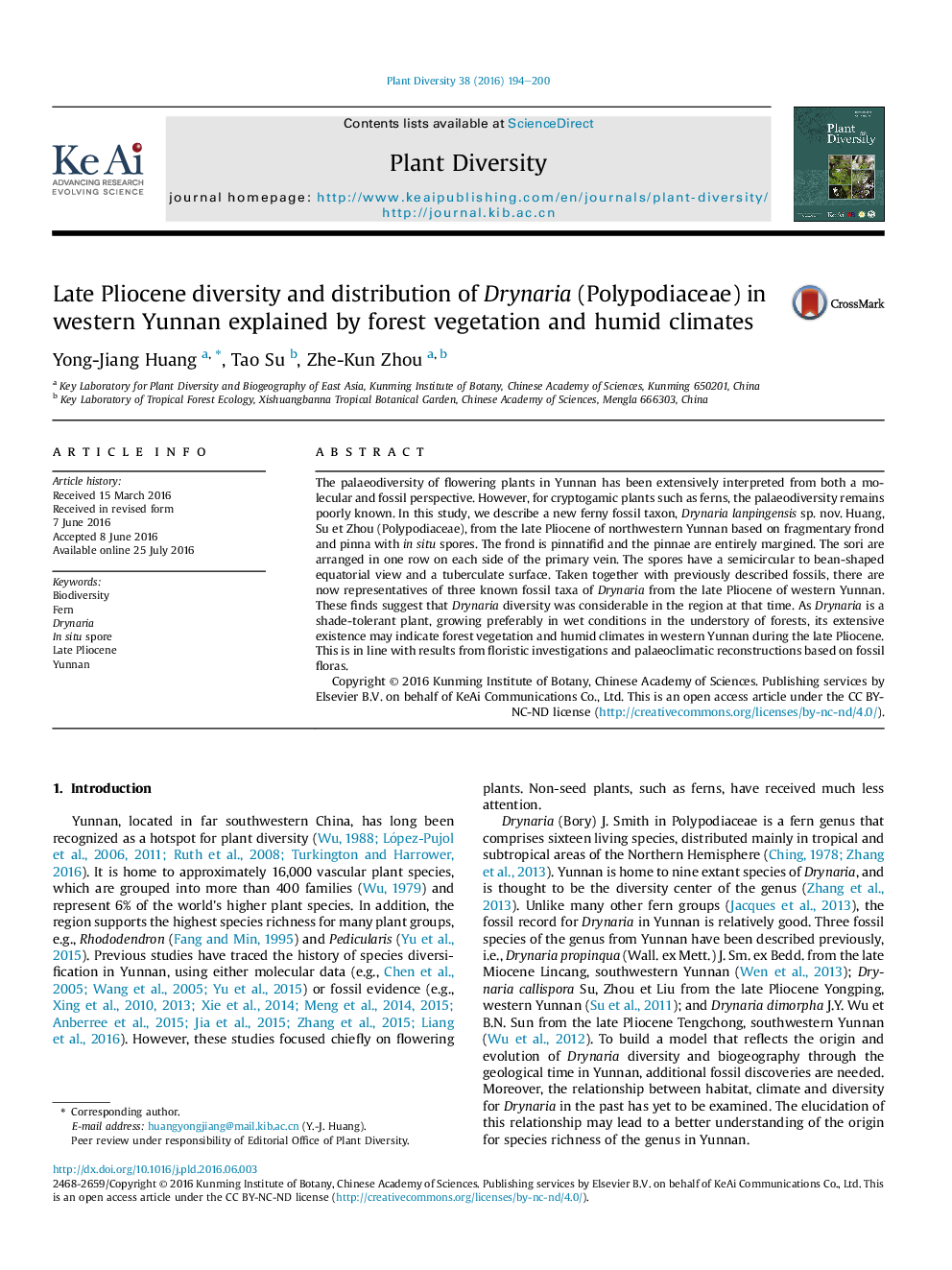| Article ID | Journal | Published Year | Pages | File Type |
|---|---|---|---|---|
| 4558892 | Plant Diversity | 2016 | 7 Pages |
The palaeodiversity of flowering plants in Yunnan has been extensively interpreted from both a molecular and fossil perspective. However, for cryptogamic plants such as ferns, the palaeodiversity remains poorly known. In this study, we describe a new ferny fossil taxon, Drynaria lanpingensis sp. nov. Huang, Su et Zhou (Polypodiaceae), from the late Pliocene of northwestern Yunnan based on fragmentary frond and pinna with in situ spores. The frond is pinnatifid and the pinnae are entirely margined. The sori are arranged in one row on each side of the primary vein. The spores have a semicircular to bean-shaped equatorial view and a tuberculate surface. Taken together with previously described fossils, there are now representatives of three known fossil taxa of Drynaria from the late Pliocene of western Yunnan. These finds suggest that Drynaria diversity was considerable in the region at that time. As Drynaria is a shade-tolerant plant, growing preferably in wet conditions in the understory of forests, its extensive existence may indicate forest vegetation and humid climates in western Yunnan during the late Pliocene. This is in line with results from floristic investigations and palaeoclimatic reconstructions based on fossil floras.
